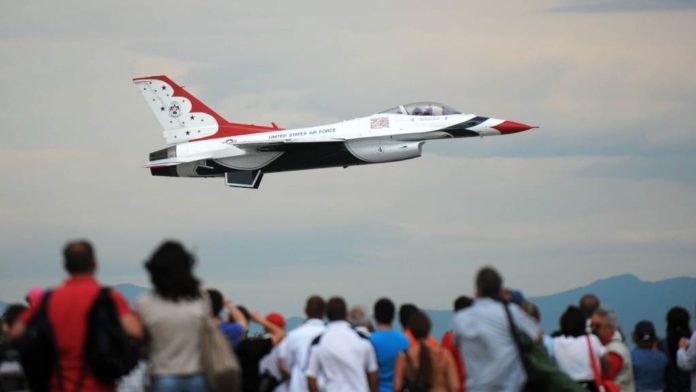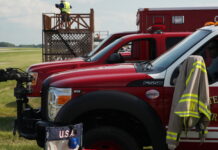“Those who cannot remember the past are condemned to repeat it.”
— George Santayana, 20th Century Spanish philosopher, essayist and poet
For our business, 2013 will be remembered as the year of sequestration. From jet teams and static displays to show cancellations and reduced business, the inability of elected officials to reach a compromise on budget-related issues has had a dramatic impact on air shows.
As we go to press, it’s not clear if, when or how sequestration’s impact on will be ended. Rumors from inside the Beltway suggest that some military participation may be restored for the 2014 season. But that is by no means clear and air show professionals throughout North America are eager for resolution soon.
Even as we wait for a decision from the Pentagon, it’s useful to take a step back and look at what sequestration has already taught us about the state of the air show business.
During the last six months, some have suggested that the absence of military participation during 2013 is positive. Their theory is that — without jet teams, single ship demos, jump teams, fly-bys and statics – the industry will be encouraged to spend more on civilian performers. Over time, more civilian acts will be booked. Innovation and investment will be encouraged and rewarded. And the air show business will see a renaissance in the kind of aviation entertainment on which the business was first built in the 1920s and 1930s.
Sequestration has prompted many event organizers to take a fresh look at how they book acts, how they build a balanced schedule of performers, and how much they have depended on military participation. Faced with the prospect of no contemporary military, these organizers have been asking themselves questions about air shows as entertainment events. Some have decided that they just can’t provide the kind of event their customers want without the military; many of those shows were cancelled. Other event organizers have spent time and money investing in different kinds of aerial entertainers. And some have decided that they must expand their event beyond aerial acts to include non-traditional forms of programming like midway rides, motorcycle stunt performances , car shows and music concerts.
Some performers have reconsidered what they do and how they do it. With a brighter spotlight on their acts, they are thinking differently about the entertainment value that their act provides. I have heard more new ideas for different kinds of acts during the last six months than during my previous 15 years with ICAS. For some, these changes were minor and could be implemented in just a few days or weeks. Other ideas will require considerable investment and practice.
Both event organizers and performers have pulled out results from past ICAS spectator surveys to identify what kinds of acts spectators want to see. Some have used those spectator results to support their decisions to cancel their events. Others have focused on the preferences among spectators for different types of civilian acts. And some have looked beyond the survey results and asked questions like, “Why is it that the military is so much more popular than civilian acts?” and “Is there something we can do to improve civilian acts to reduce the disparity?”
Even the darkest cloud has a silver lining. Although sequestration has not been good for our business, the questions that it has forced us to ask ourselves could have long-term benefits.
But only if the lessons we have learned aren’t forgotten.
What we have discovered is that, as an industry, we are too dependent on the military. Whether that support is restored for 2014 or not, it’s clear that funding has become less reliable and will remain unstable for at least the next several years. For our business to survive and prosper over the next decade, we must see the challenges encountered this year not as a one-time problem to be survived and then quickly forgotten, but as a new way of doing business.
The military is an invaluable asset to the air show community. Although there are many shows that have done well for many years without any military involvement, our industry will be something less than what it is today if we lose military participation. And I can’t agree with anybody that suggests, as a business, we would be better off without the Blue Angels, Thunderbirds, F-22 Raptor demo or the Golden Knights.
But the powerful draw of the military has sometimes made us complacent about the balance and quality of our air show entertainment, marketing our events, our attendance expectations, identifying additional sources of revenue, the aerial entertainment preferences of our audiences, our industry’s role in providing non-aerial entertainment to its audiences, and difficult and challenging questions related to the long-term goals we have for our events, our performers and our industry.
The dialogue that has started this year must be continued to ensure that the damage done by sequestration is not repeated again in the future. The solutions and new ideas that have been implemented this year should be continued and expanded upon. Our industry must decide that the return of the military will not be a return to “business as usual.” It must be a wake-up call that prompts us to look at our business in a fundamentally different way.
And, if we do not, we will almost certainly be relearning these difficult and expensive lessons within the next few years.








